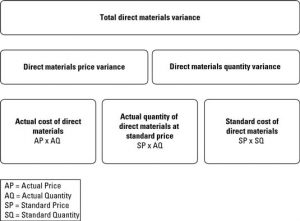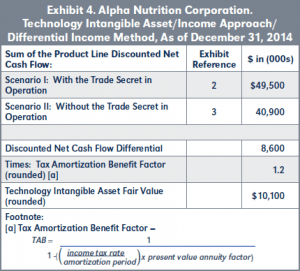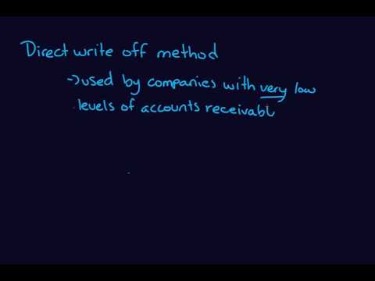
Students will be working with complex data sets in Excel to analyze data sets and derive solutions. The lowest level of our Data Analytics offer will be our Data Visualizations, where students are interpreting accounting data from looking at static visualizations and making conclusions. Text retrieval is a useful process that can allow auditors—external, internal, or other—to move beyond random sampling. Assuming that the full collection of documents https://www.accountingcoaching.online/standard-cost-systems/ is available, a well-specified query (or queries) can identify the documents that are most likely to reflect what the auditor is searching for. For example, an auditor may want to identify sales invoices with specific contractual terms and then sample only from the invoices with such terms. It’s also extremely helpful to understand languages like Python and “R” to create custom algorithms and data models that can be used with larger sets of data.
How to become a data analyst
DFI support was provided almost exclusively (more than 90%) as debt (not all concessional) with only about 3% reported as equity financing and about 6% as grants. This debt was provided in hard currency or in the currency of donors, with almost no local-currency financing being reported. In most cases, this growth comes from a very low base and many of the least-developed economies are being left behind (several face acute problems servicing high levels of debt). In 2024, the share of global clean energy investment in EMDE outside China is expected to remain around 15% of the total.

How long does it take to complete the Specialization?
Most likely, whether you are an accountant or data analytics professional, you will also be working with software like Microsoft Excel or Tableau. Both of these programs are considered an industry standard for any analytics professional. Simply stated, data analytics are what you learn from an analysis of data or data sets, whether you “crunch the numbers” manually or use data analytics tools. Accountants can use data analytics to make better decisions; they can gain insights into how their company is doing and where it might be headed. And this isn’t just true for larger companies even small businesses can benefit from taking advantage of these new technologies.
Data Analytics Help You Manage Your Financials.
Data analytics presents accountants and finance professionals with an opportunity to regain some of the decision-making authority the professions had prior to the advent of automated decision-support systems over the past two decades. Accounting data has become one of several sources of information that contribute to a business’s analytics operations, and accountants have been relegated to providing only “historic” data while the analytics department provides insights and outlooks. One effect of the cultural shift in accounting and finance is that companies are increasingly recruiting candidates from nontraditional backgrounds, according to the Sage survey. This change is an attempt by accountants to better represent their clients and for accounting firms to add a broader range of skills they can tap to serve their business customers. In select learning programs, you can apply for financial aid or a scholarship if you can’t afford the enrollment fee. If fin aid or scholarship is available for your learning program selection, you’ll find a link to apply on the description page.
Sources of finance in the energy sector, average 2018-2023
They can also improve their customer service and product offerings by using the insights that data analytics gives them. As an operations research analyst, your main objective within the company will be to solve complex business problems through the allocation of resources. While that might sound vague and cover a lot of potential objectives, it speaks more to your skills as a data analytics professional that’s able to work with complex, diverse sets of data to achieve desired business outcomes. Many businesses use accounting software to record and track their financial transactions, but they don’t always know what to do with that data. Accounting data analytics helps you make sense of your company’s financial data by providing insight into how it relates to other aspects of your business.
Accounting data analytics allows businesses to make informed decisions based on the analysis of this information. Predictive analytics and prescriptive analytics are now required because they provide actionable insights for companies. Accountants need to increase their competence in these areas to provide value to their organizations. One of the most common applications of predictive analytics is the computation of a credit score to indicate the likelihood of timely future credit payments.
Financial data analytics focuses on the data being collected by your financial software, such as accounts payable and receivable, cash flow reports, and budgets. These are metrics that are important for companies all over the world, but that doesn’t mean they’re relevant to your business. what is cost of goods sold cogs and how to calculate it Data analytics is a process that uses algorithms to extract and analyze information from large amounts of data. Accounting data analytics is a subset of this process where the information extracted comes from financial transactions, such as invoices, payments, and receipts.

Each assignment type adds a bit more level of understanding than the last, becoming more robust and fostering higher-order thinking. Check out the following tabs to learn more about our Data Analytics offer within Connect. Franklin has developed exceptional accounting data analytics courses at the undergraduate and graduate level. The faculty at Franklin are experts in the field of data analytics and they work with students all over the world to bring the specifics of accounting data analytics to them in a very hands-on, relevant, current and practical way. The union of accounting and data science has led to many of the principles of data analytics being applied to enhance accounting practices.
- Many businesses do not have enough funds required to implement their in-house system or third-party software solution which may require additional investment from them apart from their existing expenses towards payroll processing etc.
- Retention Rate is one of the important business metrics that refers to the percentage of clients retained by the company over a given period of time.
- Therefore, a particularly intriguing aspect of text mining is that many of its applications are conducted as unsupervised learning.
Any business process that collects customer data must ensure that any use of the data protects the privacy and other rights of those customers. One of the new ethical dilemmas related to AI-based algorithms in particular is the lack of consent when the systems create private data that didn’t previously exist. An example is an algorithm that automatically links a person’s bank account activity with the location tracking and call history collected from the individual’s https://www.business-accounting.net/ cell phone. In this module, you’ll be guided through a mini-case study that will illustrate the first three parts of the FACT model, with a focus on the C, or calculations part of the FACT model. First, you will perform a correlation analysis to identify two-way relationships, and analyze correlations using a correlation matrix and scatter plots. You will then build on your knowledge of correlations and learn how to perform regression analysis in Excel.
Your electronic Certificate will be added to your Accomplishments page – from there, you can print your Certificate or add it to your LinkedIn profile. Businesses can use automated platforms like Hevo Data to set this integration and handle the ETL process. Deep Learning represents the deeper structure of events and situations in numerous layers of the neural network by combining the information with more advanced methods. For example, existing data can be utilized to construct automated algorithms for specific audit judgments, such as Lease Categorization, Bad Debt Estimations, etc.
Data analysts and data scientists both work with data, but what they do with it differs. Data analysts typically work with existing data to solve defined business problems. Data scientists build new algorithms and models to make predictions about the future. It will cover some of the same material from Introduction to Accounting Data Analytics and Visualization, but in a more general purpose programming environment (Jupyter Notebook for Python), rather than in Excel and the Visual Basic Editor. These concepts are taught within the context of one or more accounting data domains (e.g., financial statement data from EDGAR, stock data, loan data, point-of-sale data). Targeted concessional support is particularly important for the least-developed countries that will otherwise struggle to access adequate capital.

Illinois serves the world by creating knowledge, preparing students for lives of impact, and finding solutions to critical societal needs. Coursera’s editorial team is comprised of highly experienced professional editors, writers, and fact… The average base salary for a data analyst in the US is $69,517 in December 2021, according to Glassdoor. This can vary depending on your seniority, where in the US you’re located, and other factors. Others say the elimination of a salary threshold as part of the overtime exemption could be a windfall for businesses. A 2023 National Bureau of Economic Research report found “widespread evidence” of a practice where companies use “deceptive” manager titles like “guest experience leader” or “carpet shampoo manager” to avoid paying overtime premiums.
In-house training is the most common method companies are using to improve employees’ business analytics skills, according to a 2014 survey of more than 2,100 CFOs by staffing services firm Robert Half. Expertise in business analytics, such as business intelligence and data mining, was deemed mandatory for at least some accounting and finance employees by 61% of more than 2,100 CFOs participating in a 2014 survey by staffing resources firm Robert Half. Tangible actions — and critical business decisions — arise from prescriptive analytics. Accountants use the forecasts they create to make recommendations for future growth opportunities or, in some cases, raise an alert on poor choices. Companies need strong accounting leaders to translate their portion of that data into valuable insights that can help a company improve business outcomes and adjust to changing sales patterns all in real-time. First, it presents a survey of technology topics in accounting, including process mining, blockchain and applications in audit, tax, and assurance.
This effort to understand the business and what’s important to management can help the auditors set up data analytics tools in the most useful way for the audit. These procedures can help them better understand their clients’ environment and use exception reporting to improve audit quality and detect fraud. Every auditor should have the ability to use stronger audit tools than spreadsheets.
Macroeconomic and country-specific factors are the major contributors to the high cost of capital for clean energy projects, but so, too, are risks specific to the energy sector. Alongside actions by national policy makers, enhanced support from DFIs can play a major role in lowering financing costs and bringing in much larger volumes of private capital. Financial statement auditors increasingly need to know more about their clients’ businesses. Thanks to advances in data analytics and software, many auditors are finding ways to gain deeper understanding of their clients’ organizations than ever.
